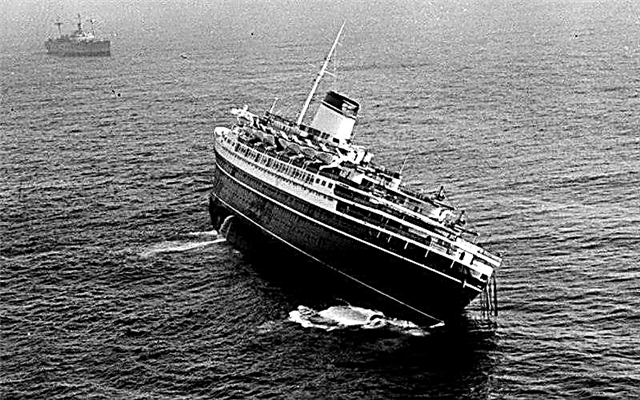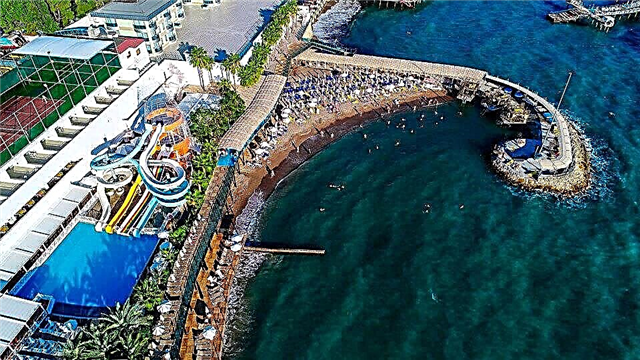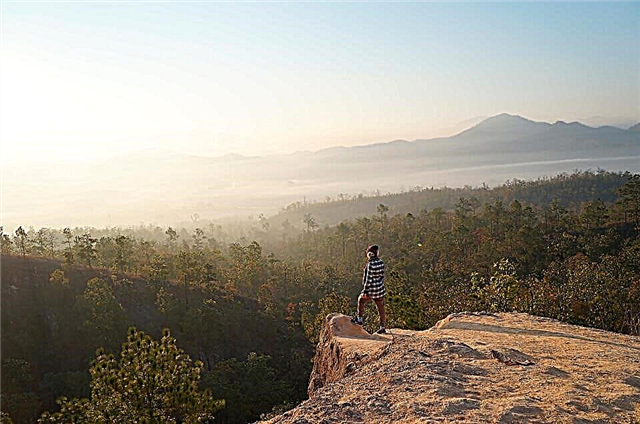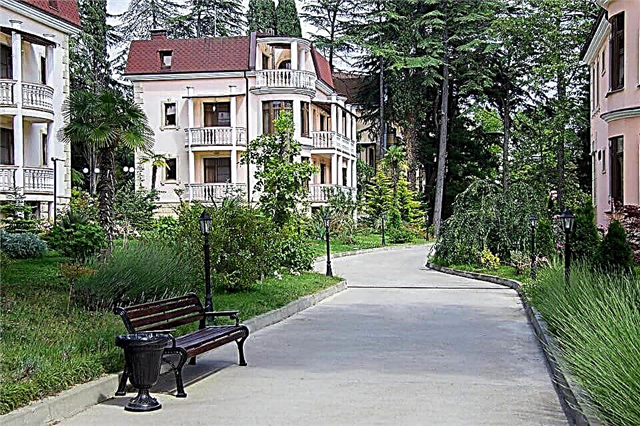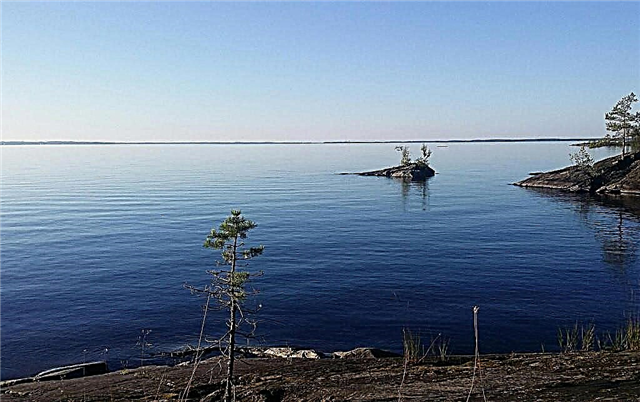Address: Russia, Pskov region, Pskov
Build date: end of the XI century - the beginning of the XII century.
Main attractions: Trinity Cathedral, bell tower, Prikaznaya chamber, towers, fortress walls
Wall length: east - 435 m, west - 345 m, south - 88 m
Number of towers: 7
Coordinates: 57 ° 49'20.7 "N 28 ° 19'43.1" E
Cultural heritage site of the Russian Federation
Content:
They say that without seeing the ancient Krom, you will not understand the soul of Pskov. The majestic fort near the confluence of Pskova and Velikaya is a real repository of historical memory. He learned about the freedom of the veche republic and the raids of the enemy, popular riots and the fascist occupation. Powerful gray walls encircle Veche Square and the snow-white Trinity Cathedral, and while walking around the Kremlin, you seem to find yourself in the Middle Ages.

Bird's eye view of the Kremlin
How Crom was built
Archaeological research has made it possible to establish that the first settlement at the confluence of Pskova with the Velikaya River appeared in the 5th-6th centuries. The elevated position made it possible to control the surroundings and was strategically important, therefore, in the 10th-11th centuries, earthen ramparts and a wooden Trinity Church were built on the cape. Some scholars believe that at that time the first stone fortifications could have stood on the site of the future Kremlin. The constant concern for defense has never been superfluous. Pskov occupied a border position in the northeast of Russia and was repeatedly attacked by enemies.
During the existence of the Pskov Veche Republic, Krom was considered its spiritual and administrative center. Here stood the Orthodox Trinity Cathedral and a spacious veche square. The Kremlin territory was surrounded by powerful stone walls and reinforced with artillery.

View of the Kremlin from the Velikaya River
The city grew and military technology became more sophisticated. The constant threat from the west demanded new measures of protection, so the Pskov Kremlin also changed. One line of walls was not enough, and in the 70-80s of the XIII century, another line of defense was erected from the south of Krom - the powerful Dovmont city. It got its name from the name of the Lithuanian prince who built it, who took the name Timofey when he was baptized. After that, the territory of the Kremlin began to be called Zastya.
As the years passed, the medieval fortress continued to expand. At the beginning of the 14th century, Zastenye was surrounded by another stone ring, in 1375 a stone wall of the Old City appeared, and at the end of the 15th century, Zapskovye was also surrounded by powerful walls - a part of the city stretching from the north of the Pskova River.
At the beginning of the 16th century, Pskov became part of the Moscow principality, and fortifications were created on the river. Above and below the fortress, sections of walls appeared, thrown from coast to coast. There were lowering gratings on them, therefore, in the event of an enemy attack, Pskov turned out to be closed from all sides.

View of the Kremlin and Trinity Cathedral from the Vlasyevskaya tower
At that time, the Pskov fortress was considered the best in Russia. It had five belts of powerful stone fortifications, stretching for 9 km and fencing an area of 215 hectares. Underground and wall passages ran between the walls. For the defenders, 40 towers were built in the fortress, and for the entrance there were 14 gates. However, the heart of the medieval fortress remained its most ancient part - Krom.
Kremlin walls and towers
The gray walls of the Kremlin impress everyone who sees them. They have a height of 6-8 and reach a thickness of 2.5 to 6 m. At the top of the walls there are areas for passage, covered with a wooden roof. To the east is the longest wall, stretching for 435 m. And to the south - the shortest wall, which is also called "Percy". It is only 88 m long.
The powerful towers of Krom were modernized along with the development of the art of fortification and military technology. Once there were 40 of them, but military conflicts, and especially the Great Patriotic War, did not spare the fortress. Therefore, only seven towers have survived to this day.

View of the Kremlin's Flat Tower
The oldest of them is the northern outpost of the Kremlin. This is Kutekroma or Kutny bonfire (1400). Unusually, the name is made up of the old words "kut", which means corner, "chrome" or the Kremlin and "fire" - a tower, and means a tower standing "in the corner of the Kremlin." The five-tiered round fort looks very picturesque, and the tower is often called Red, that is, beautiful. It rises to 30 m and has an average diameter of 10.5 m. An opening is opened in the wall near the fortification, through which you can go to the observation deck.
Kutekroma was destroyed in several raids, and was especially damaged during the Northern War, which Russia waged with Sweden at the beginning of the 18th century. Later, on the site of the dilapidated fortification, a gazebo was built, where A.S. Pushkin. And the old tower was restored in the 60s of the last century.
At the same time, the Trinity Tower appeared in the Kutekromy in the Kremlin. It is also called Lubyanskaya and Sentry. The tower was destroyed in 1787 and rebuilt together with the Great or Trinity gates in the 80s of the last century.

View of the Ploskaya and Vysokaya kremlin towers at the mouth of the Pskova
The square squat Vlasyevskaya tower was erected at the end of the 15th century. It got its name from the temple of Vlasiy of Sevasti that stood here earlier. The tower is covered with a high wooden tent and has an observation attic at the top. It was intended to protect Krom from the side of the Great River. The old tower has a gate, and through which for many centuries people entered the Kremlin from Zavelichye.
Once in the center of Krom there was the Old Marketplace, and merchants and local residents came to it through the Vlasyevskaya gate. And in the tower itself there was a customs office. At night, the gates were locked and armed guards were posted near them. The tower that we can see today was rebuilt in 1966, that is, it is a remake. In 2010, the wooden tent of the tower was burnt to the ground by a severe fire, but now it has been completely restored.
Another travel tower was built in the 15th century over the Holy Gates and is called Rybnitskaya. It led to the descent to the Pskov River, where at that time there was one of the city's shopping districts - Rybniki. The old tower has not survived to this day, as it was dismantled due to its dilapidation. However, in the 70s of the last century, thanks to the efforts of builders and restorers, the Rybnitsa Tower was rebuilt. Like Vlasyevskaya, it was badly damaged during a fire in 2010, but then it was restored.

Great gate
The Dovmondov or Smerdyu tower was restored according to the project of the architect Konstantin Andreyevich Ton. It happened in 1866, when the Pskov Kremlin was once again reconstructed. The multifaceted building resembles European medieval castles, and at the top of it there is a fore-weather vane depicting a Russian warrior.
The middle or Snetnaya tower stands above Pskov. It rises 35 m and has a diameter of 11 m. It is interesting that food was kept here for the dogs that guarded the adjoining part of the Kremlin. The Modern Middle Tower is a remake built in 1973.
The squat round tower on a narrow promontory at the mouth of the Pskova is called Ploskaya. It has a diameter of 16 m and is interesting in that during its long history it has hardly been rebuilt and has remained in its original form. Now the ancient tower has been very well restored.

Trinity Tower, memorial cross on the site of the Annunciation Cathedral
Temples and civil buildings on the territory of the Kremlin
The architectural ensemble of the Kremlin is very beautiful. Its center is occupied by the snow-white Trinity Cathedral, which today has the status of the cathedral church of the diocese. This is the fourth cathedral built in Except. The very first wooden Trinity Church was erected in the 10th century by order of Princess Olga. The cathedral that can be seen today was erected over 17 years and completed in 1699. It rests on six massive pillars and rises to a height of 78 m. Today, church services are conducted within four limits. Not far from the cathedral there is a snow-white bell tower with a spire and a clock.
Of great interest is a visit to Dovmont's town - stone buildings erected in the 13th century for greater protection of Krom. These are sections of medieval walls and several temples uncovered as a result of archaeological excavations. In the southern wall, there is the Prikaznaya Chamber, a stone civil building that appeared at the end of the 17th century. The rectangular building has thick walls (2.3 m) and a four-pitched metal roof. The interior of the medieval provincial chambers has been recreated and exhibitions are held here.

Trinity Cathedral with a bell tower
The gates of the fortress are adjoined by a powerful fortification - zhab. Its name was formed from the Old Russian word "ohaben", which means "sleeve". A long, walled corridor connects the outer gate with the inner entrance to Krom. In European fortresses, such structures were called "zwingers". In addition, in the Pskov Kremlin you can see a guest house, a parable house and old powder magazines.
Working hours
Krom is spread over an area of 3 hectares on a high promontory at the confluence of the Pskova and Velikaya rivers. The entrance to its territory is free. You can visit the Kremlin from 6.00 to 22.00. Museum expositions are open from 11.00 to 18.00, except Mondays. It is very interesting to be in the Trinity Cathedral during the evening divine service, when the bishop's choir is singing.

View of Krom from the Pkov River
How to get there
The Kremlin stands in the center of Pskov, north of the Olginsky bridge over the Velikaya River. Through the city, people approach its territory by buses No. 1, 7, 7A, 11, 15, 18, 19, 25, 30, as well as by minibuses No. 4A, 51, 51A (stop "Lenin Square"). On the side of the Velikaya River, under the walls of the Kremlin, there is a water taxi dock.


